1. TGI Fridays
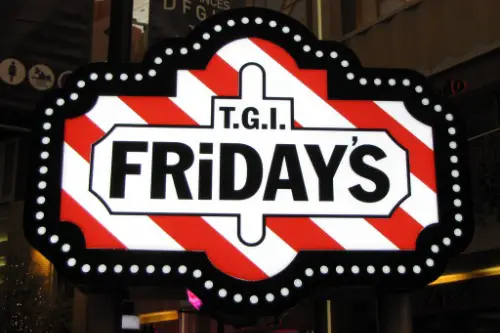
TGI Fridays, known for its vibrant atmosphere and signature cocktails, had a golden era in the 80s and 90s, becoming a go-to for casual dining in America. However, by 2024, the beloved chain filed for Chapter 11 bankruptcy protection due to a combination of rising operational costs, especially related to food and labor, and the ever-increasing competition from other dining options. The company had been struggling to keep up with consumer demands for quicker, more affordable options, including a surge in popularity of fast-casual spots like Chipotle and Panera Bread. For Fridays, the constant pressure to update its menu while keeping prices reasonable proved difficult, according to the Wall Street Journal.
The company’s woes were further exacerbated by the pandemic, which shifted dining habits, pushing more people to home-cooked meals or delivery options. Despite its best efforts to revive its brand, including menu revamps and technology upgrades for delivery, customer traffic continued to decline. The bankruptcy filing allowed TGI Fridays to reorganize and focus on revitalizing its operations. As part of its restructuring plan, the chain aimed to reduce underperforming locations and redirect its energy toward offering a more streamlined dining experience that better fits today’s consumer expectations.
2. Buca di Beppo
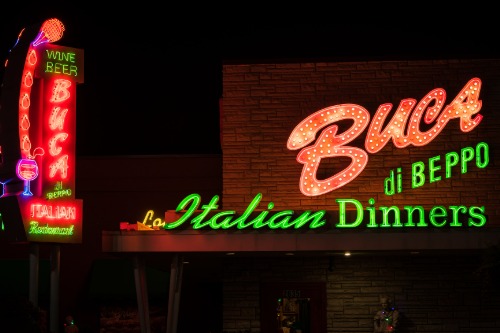
Buca di Beppo, a once-popular Italian-American restaurant known for its massive pasta portions and lively, kitschy decor, filed for bankruptcy in 2024 after years of struggling to stay relevant, according to PEOPLE.com. Initially a favorite for family gatherings and celebratory dinners, the chain was hit hard by a decline in customer footfall, particularly as younger diners sought more modern dining options and healthier, faster alternatives. Rising food and labor costs didn’t help, leaving the chain with shrinking profit margins. Additionally, its larger-than-life portion sizes seemed outdated, particularly when diners were increasingly gravitating toward smaller, healthier portions.
In a bid to streamline its operations and focus on more profitable areas, Buca closed 13 locations and restructured its debt. While the chain’s bankruptcy filings left many wondering about its future, it’s not the end of the road. Several Buca locations continue to operate, and the brand is eyeing a potential revival. The chain’s restructuring efforts focus on adapting to current dining trends, which could include offering take-out or delivery options, as well as tweaking its menu to appeal to a more health-conscious customer base.
3. Red Lobster
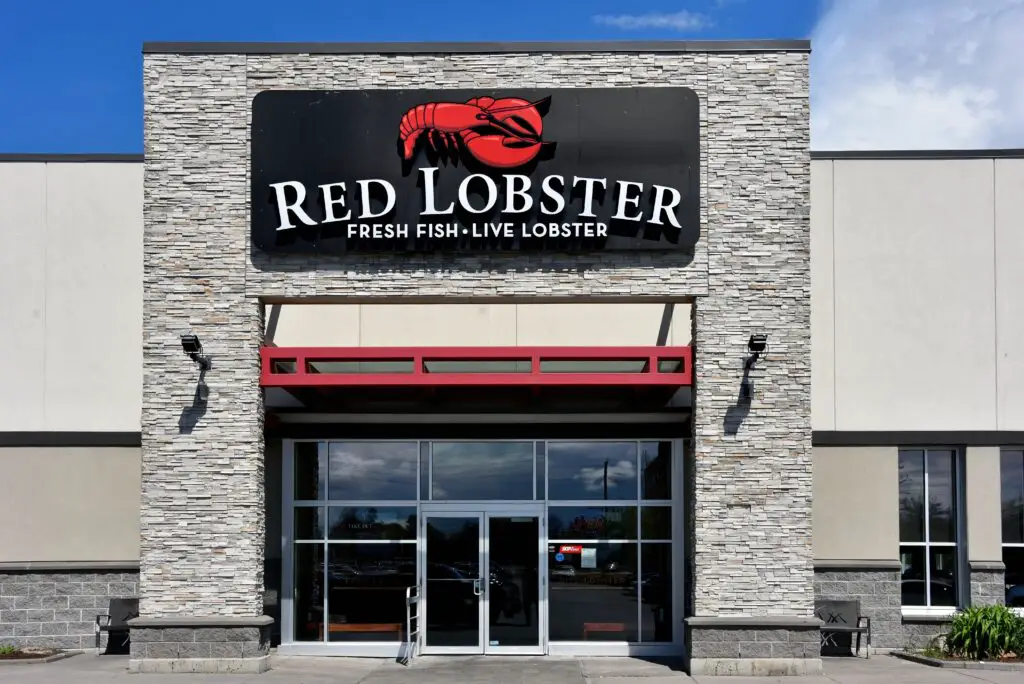
Red Lobster, once the quintessential American seafood chain, is facing an identity crisis after filing for bankruptcy in 2024. The chain, known for its iconic Cheddar Bay Biscuits and lobster dishes, found itself struggling with a variety of pressures, including rising food prices, supply chain issues, and increasing competition from both upscale seafood restaurants and grocery stores offering more affordable, convenient options. While Red Lobster once enjoyed the kind of iconic status that made it a family favorite, the growing trend of health-conscious eating and customers choosing to prepare meals at home led to a significant dip in traffic.
The pandemic accelerated the restaurant’s decline as fewer people dined out and more chose takeout or delivery. In response, Red Lobster attempted to reposition itself with a fresh menu, limited-time offers, and new dining concepts, but these efforts couldn’t reverse the brand’s downward trajectory. The bankruptcy filing allowed Red Lobster to focus on restructuring its debt and possibly scaling back its operations to more profitable areas, Wall Street Journal reports. The company’s future remains uncertain, but it is working to adapt to the changing tastes of modern diners.
4. Ruby Tuesday

Ruby Tuesday, once a household name in American casual dining, filed for bankruptcy in 2024 following years of declining sales and market share. Despite its early success, particularly with its famous salad bar, Ruby Tuesday struggled to maintain relevance in a changing industry. The rise of fast-casual chains and consumer demand for healthier options led to a drop in customer visits, and according to The U.S. Sun, they were rapidly closing doors. Rising food and labor costs further eroded its profit margins, and despite several attempts to reinvent itself, including updates to its menu and restaurant designs, the brand couldn’t regain the magic it once had.
The bankruptcy filing allowed Ruby Tuesday to close underperforming locations and refocus on revitalizing its brand. While the chain is not dead, it must figure out how to adapt to the demands of the modern dining scene, which includes leveraging delivery, enhancing customer experiences, and offering healthier menu options. The outcome of its restructuring efforts will determine if Ruby Tuesday can make a successful comeback or if it will continue to struggle.
5. Roti

Roti, a fast-casual Mediterranean chain, filed for bankruptcy in 2024 after struggling to compete with both established and emerging fast-casual brands. Despite offering fresh, healthy food options that aligned with current consumer trends, the chain was unable to manage the rising food and labor costs that burdened its profitability. The fast-casual sector became increasingly competitive, with diners flocking to new and innovative brands, leaving Roti to face stiff market pressures, Food & Wine shares.
As part of the bankruptcy process, the brand restructured its operations, aiming to streamline its business and focus on its core markets. However, it remains to be seen whether Roti can recover in an increasingly saturated dining space where cost-effective, fast meals dominate the market.
6. Applebee’s
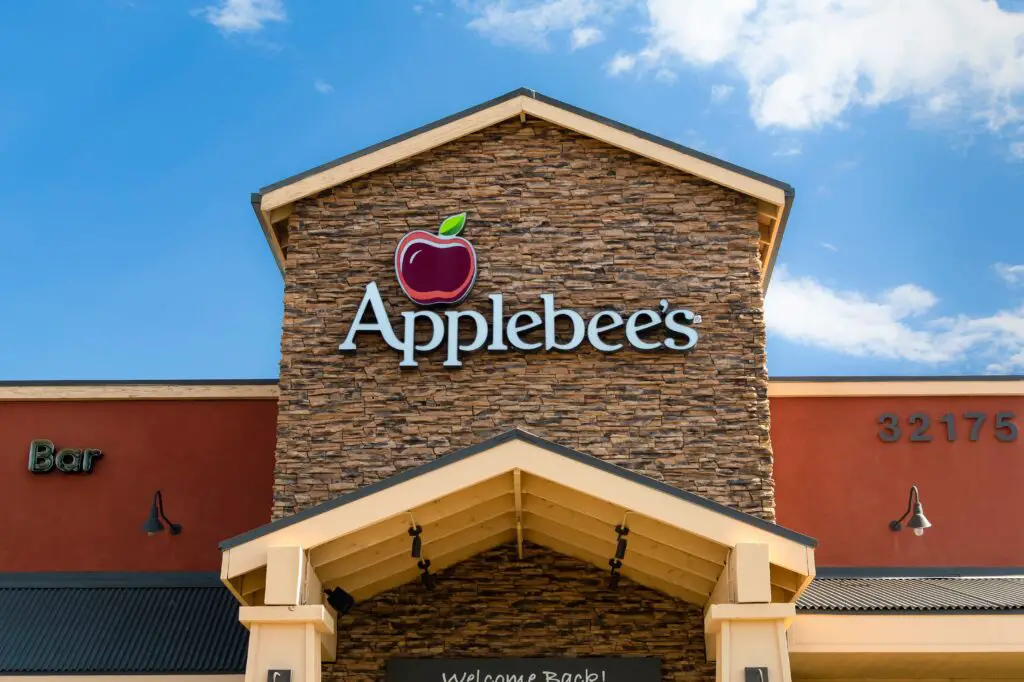
Applebee’s, once a giant in the casual dining space, has been on a downward trajectory for years, culminating in the 2024 bankruptcy filing. The chain struggled to reinvent itself in an era when diners were increasingly seeking quicker, cheaper, and healthier dining options. Applebee’s, known for its wide-ranging menu and “2 for $20” deals, was hit by rising food costs, changing consumer preferences, and a shift toward healthier eating. The introduction of lower-calorie and healthier menu items was an attempt to appeal to health-conscious consumers, but it wasn’t enough to offset the broader changes in the industry.
Moreover, the brand faced stiff competition from fast-casual chains that offered similar menus at a quicker pace. Despite efforts to refresh its image with trendy decor and menu innovations, Applebee’s couldn’t keep pace with evolving dining habits. The bankruptcy allowed the company to attempt restructuring, though it remains to be seen if the brand can revive its former popularity.
7. Cracker Barrel
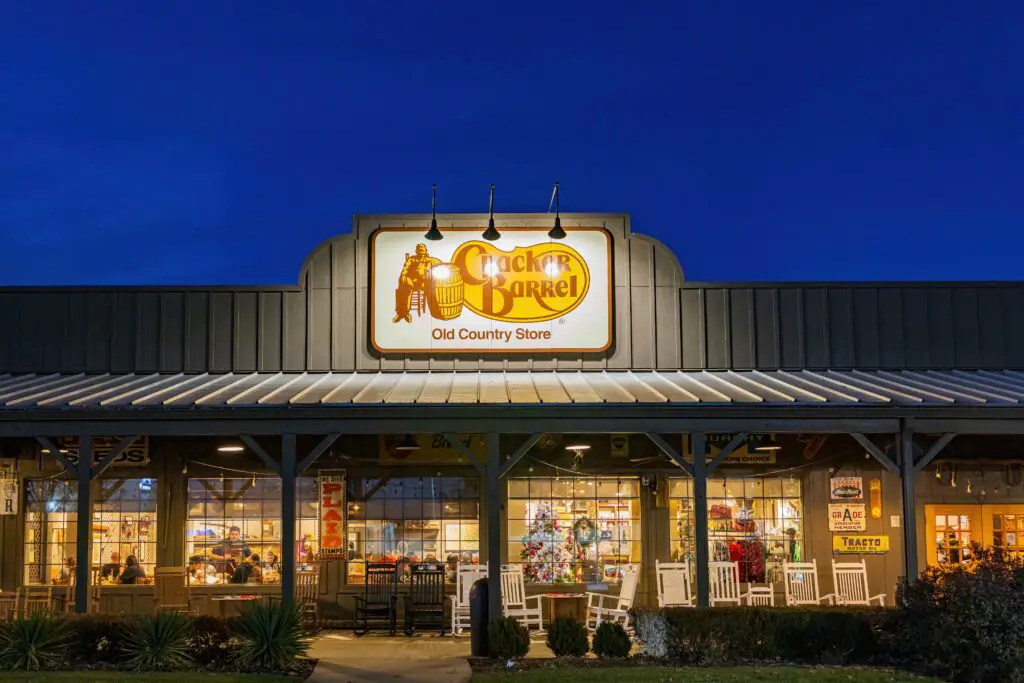
Cracker Barrel, known for its homey Southern-inspired dishes and rustic decor, filed for bankruptcy in 2024 after closing several of its underperforming locations. Despite being a beloved brand with loyal fans, the chain faced financial challenges due to rising food costs and operational difficulties. Changing dining habits, with customers opting for faster, more affordable meals, contributed to the decline in traffic. While Cracker Barrel maintained a nostalgic charm, its reliance on traditional, sit-down dining made it harder to compete with quicker alternatives that catered to the growing demand for convenience.
In addition, the chain was hit by increased labor costs and the broader impact of the pandemic on dining out. The bankruptcy allowed Cracker Barrel to restructure and possibly streamline its operations to focus on its more profitable locations. While it remains a household name, Cracker Barrel’s ability to adjust to new dining trends will likely determine its long-term viability.
8. Hawkers Asian Street Food
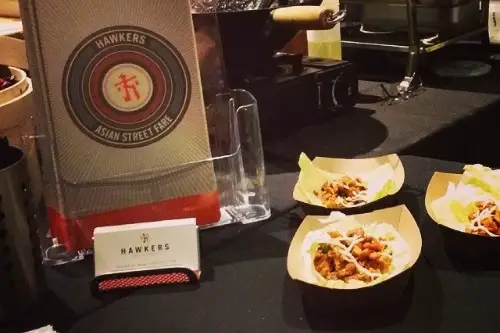
Hawkers Asian Street Food, a fast-casual chain known for offering a variety of Asian-inspired dishes, filed for bankruptcy in 2024. Despite initially gaining popularity for its vibrant menu and trendy concept, the chain struggled with rising food and labor costs that significantly squeezed its profit margins. Moreover, the increasing competition from other fast-casual dining options and delivery services compounded the brand’s difficulties. As a result, Hawkers’ once-thriving locations began to see lower traffic, especially as diners turned to more affordable, quick dining alternatives.
The bankruptcy filing was a necessary step to restructure its finances and focus on its core offerings. The brand attempted to modernize and cater to a millennial audience, but the changing consumer landscape proved challenging. Whether Hawkers can rebound remains uncertain, but its restructuring efforts suggest it is trying to find a sustainable path forward in an increasingly competitive restaurant market.
9. Tijuana Flats

Tijuana Flats, a Tex-Mex chain known for its vibrant atmosphere and flavorful dishes, filed for bankruptcy in 2024, citing several factors that contributed to its financial struggles. Although the chain enjoyed a devoted following for its customizable menu and unique offerings, the rise of fast-casual dining options, like Chipotle, led to increased competition in the Tex-Mex market. Tijuana Flats’ reliance on brick-and-mortar locations, while successful in some markets, became a liability as consumers increasingly gravitated toward takeout and delivery.
The chain’s financial difficulties were also compounded by rising ingredient costs and a shift in consumer preferences towards healthier options. As part of the bankruptcy process, Tijuana Flats planned to close underperforming locations and refocus its efforts on creating a more efficient business model, possibly through more digital solutions to capture the changing demands of the restaurant industry.
10. Shari’s Café and Pies

Shari’s Café and Pies, a beloved regional chain specializing in comfort food and baked goods, filed for Chapter 7 bankruptcy in 2024 after abruptly closing all 33 of its locations. The closure was attributed to a combination of rising operational costs and declining customer visits. For years, Shari’s had been a local favorite, particularly for its pies, breakfast dishes, and homey ambiance. However, as the industry shifted, the chain struggled to adapt, facing increasing competition from modern fast-casual spots and the rise of food delivery services.
The decline in foot traffic, paired with the challenge of keeping costs manageable, created insurmountable financial pressures. While Shari’s brand still has a loyal following, its inability to diversify and modernize its offerings contributed to its demise. The closure of its locations marked a dramatic end to the chain’s longstanding presence in the Pacific Northwest.
11. TGI Fridays (UK)
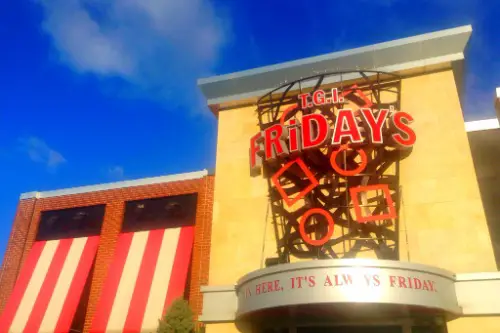
TGI Fridays’ UK division filed for bankruptcy in October 2024, closing several locations and putting around 4,500 jobs at risk. The iconic American chain was particularly popular in the UK for its casual dining experience and hearty, American-style meals. However, rising operational costs, compounded by the impact of Brexit on supply chains and the increasing price of ingredients, put a significant strain on the business. As dining habits shifted towards more health-conscious and affordable alternatives, customers began to visit less frequently, which further hurt Fridays’ bottom line.
In an attempt to turn things around, the brand closed its underperforming sites and looked to focus on more profitable areas, but the brand’s heavy reliance on traditional, sit-down dining began to feel out of touch with changing consumer behavior. While the bankruptcy primarily impacted the UK market, it highlights a larger trend of chains struggling to stay relevant as dining expectations evolve.
12. Sweet Tomatoes
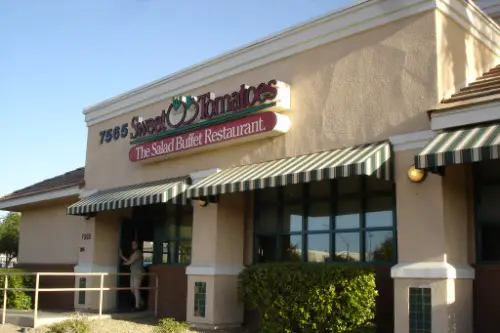
Sweet Tomatoes, the salad bar and soup buffet chain, filed for bankruptcy in 2024 after years of struggling with declining customer interest and operational challenges. Known for its all-you-can-eat concept, Sweet Tomatoes once attracted a loyal customer base, particularly those interested in healthier options. However, the rise of food delivery services, coupled with changing consumer behavior and a preference for quicker, less expensive meals, left the brand unable to compete with newer dining trends. Additionally, the pandemic forced the chain to temporarily close many of its locations, and it struggled to recover even after reopening.
Despite efforts to modernize its menu and implement new technology to enhance customer service, Sweet Tomatoes’ financial difficulties were too significant to overcome. The company filed for bankruptcy to reorganize its debt, but ultimately, many of its locations were permanently closed.
13. Hooters
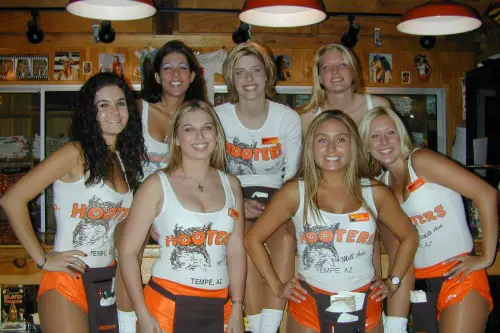
Hooters, the chain famous for its casual environment and waitstaff in revealing uniforms, filed for bankruptcy in 2024 as it faced a variety of business challenges. Once an iconic brand, the chain has struggled to appeal to newer generations that demand more from their dining experiences. The business model, relying heavily on a niche market and certain cultural perceptions, became increasingly less relevant. Additionally, like many others, rising labor and food costs strained the chain’s finances.
The brand tried to reframe its image and offer more family-friendly elements to its menu, but its reliance on its original formula was a heavy burden. Hooters filed for bankruptcy protection to reorganize and refocus on profitability, closing underperforming locations, and adjusting to the digital age.


